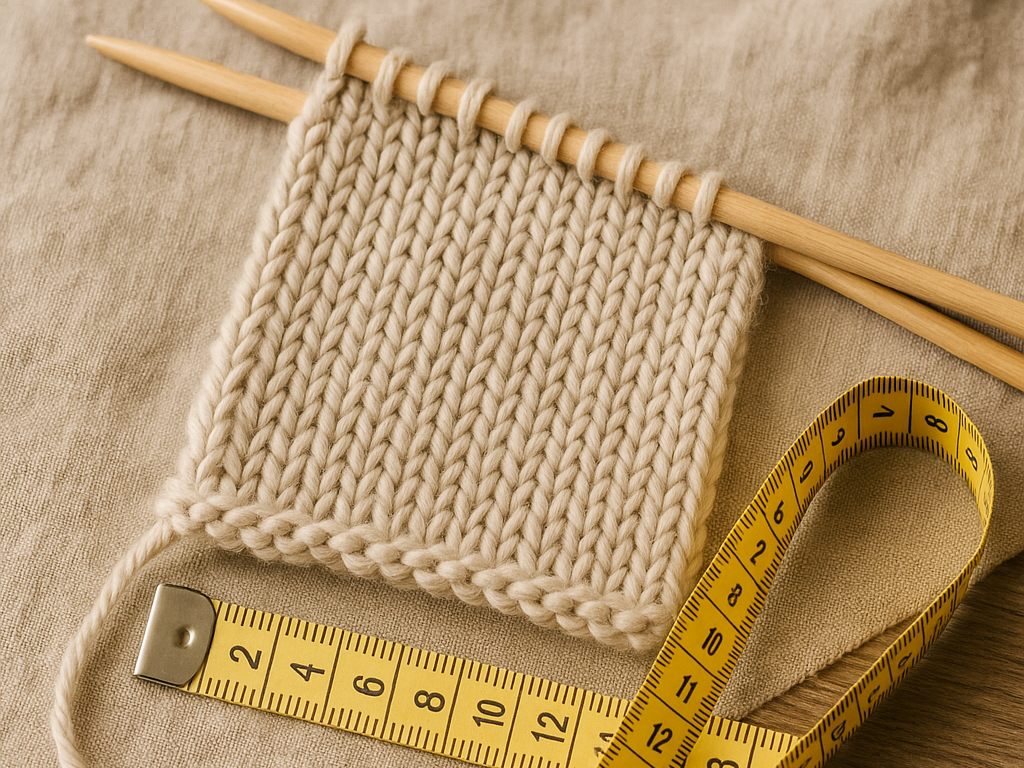What Is a Gauge Swatch – and Why You Shouldn’t Skip It

When you're starting a new knitting or crochet project, your hands are already itching to begin: yarn ready, needles in hand – and you just want to dive in.
But then there's that small, inconspicuous line in the pattern: "Gauge: 10 x 10 cm = 20 sts x 28 rows."
Many makers skip it, thinking a tiny difference won't matter. Spoiler: it does. 😉
📏 What exactly is a gauge swatch?
A gauge swatch is a small test square – usually about 10 × 10 cm – made using the same yarn, needles, and stitch pattern as your planned project.
It shows you how many stitches and rows you need to reach a certain size.
Depending on the yarn, needle size, your tension, or even your mood that day, the result can vary.
Even if you use the exact same yarn as in the pattern, your personal tension may differ.
⚠️ Why the gauge swatch matters
🧥 Fit: A difference of just two stitches per 10 cm can change the width of a sweater by several centimeters.
-
🧶 Yarn Usage: If your piece turns out larger or smaller than intended, you may run out of yarn – or have too much left.
-
🪡 Professional Finish: Only the correct gauge ensures that the shape and proportions match the pattern design.
In short: spending 30 minutes on a gauge swatch can save you hours of unraveling later.
👉 How to make a gauge swatch – step by step
Cast on generously:
Cast on about 5–6 cm more stitches than you need for 10 cm (e.g. 30 instead of 20 stitches).
This gives you a clean area to measure in the center, as edges can distort.-
Work in pattern:
Make sure to work your swatch in the main stitch pattern used in your project – not plain stockinette if your pattern calls for something else. -
Bind off and block:
Wash or block your swatch exactly as you would treat your finished piece. That's the only way to get accurate results. -
Measure:
Lay your swatch flat and measure 10 cm across and 10 cm high, counting stitches and rows. -
Adjust if needed:
-
If you have more stitches than the pattern calls for, your tension is too tight → use larger needles.
-
If you have fewer stitches, your tension is too loose → use smaller needles.
-
Extra tip
😊 My Conclusion
A gauge swatch isn't a chore – it's your secret to success. Take a moment before you start, and your handmade piece will reward you with perfect fit and shape.
📣 Make your next gauge swatch today – and share it in my Facebook group!
#strickenimtrend #maschenmitliebe #knittingtips #crochetbeginners #knittingbasics
Take that short moment before you begin – your future favorite piece will thank you for it.
With love
Kathrin 💕
Want to dive deeper into the world of stitches?
Explore my patterns, browse the blog, or join our community!
